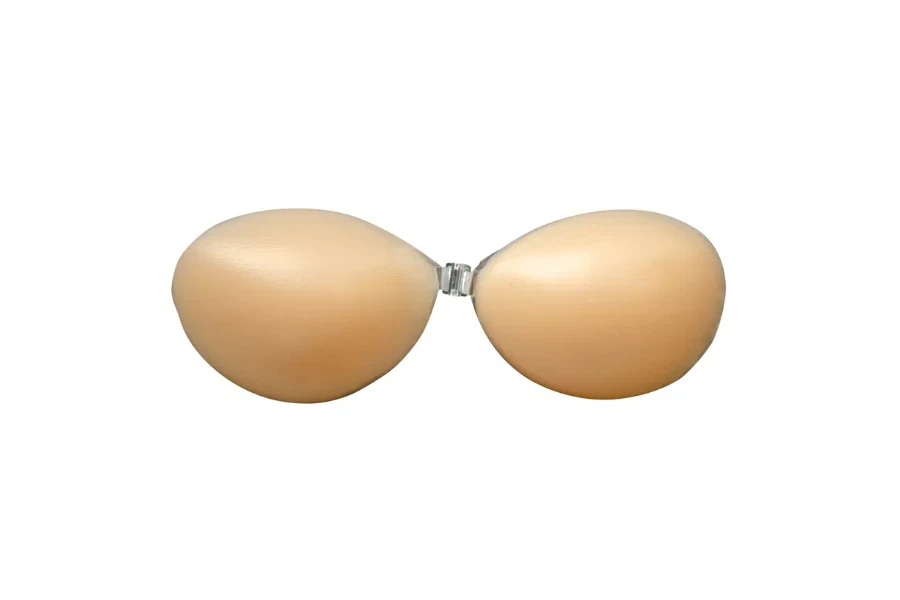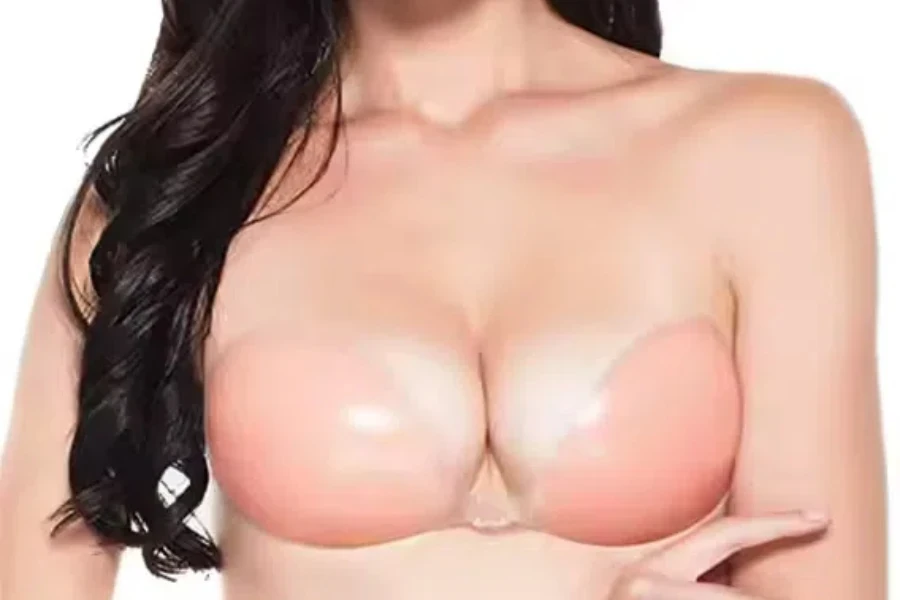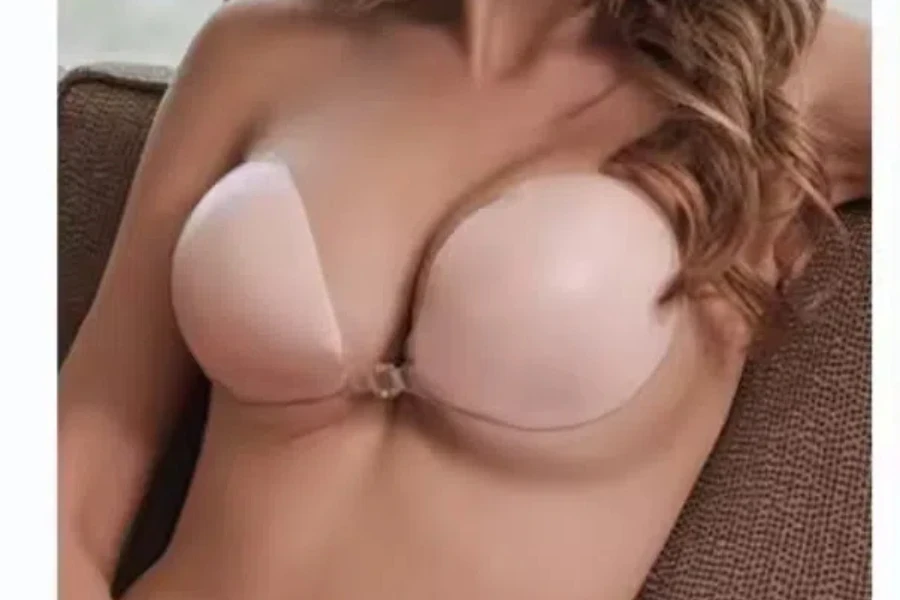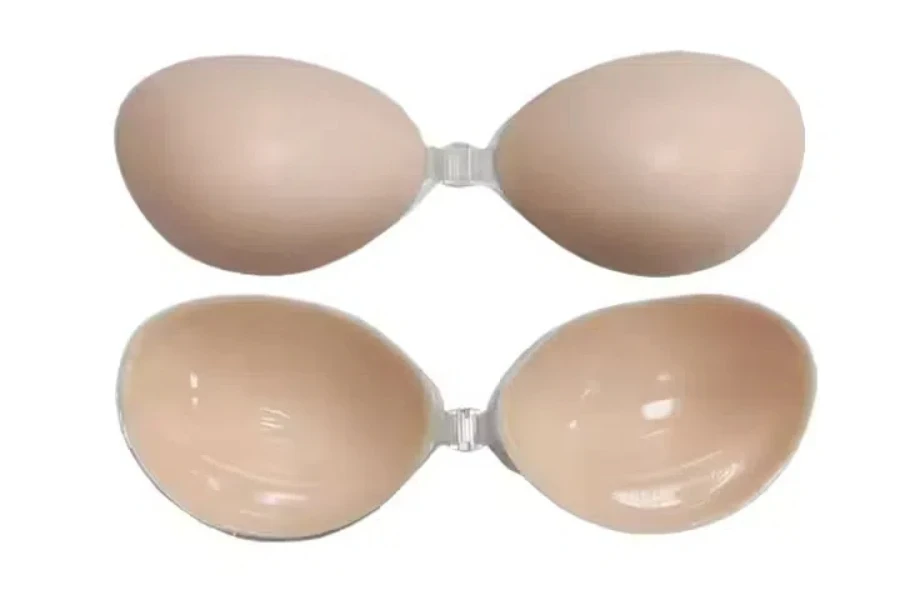Sticky bras, also known as adhesive bras, have become a game-changer in the apparel industry. These innovative undergarments offer a seamless and comfortable alternative to traditional bras, making them a popular choice among women worldwide. In this article, we will explore the market trends, innovative designs, and key players that are shaping the sticky bra market.
Table of Contents:
– Market Overview: The Rise of Sticky Bras in the Apparel Industry
– Innovative Designs and Materials: What Sets Sticky Bras Apart
– Consumer Preferences: Why Sticky Bras Are Gaining Popularity
– Key Players and Brands Leading the Sticky Bra Market
– Challenges and Opportunities in the Sticky Bra Market
– Conclusion
Market Overview: The Rise of Sticky Bras in the Apparel Industry

The global bra market is experiencing significant growth, with sticky bras emerging as a key segment. According to Research and Markets, the bra market is forecasted to grow by USD 19,044.13 million during 2023-2028, accelerating at a CAGR of 7.78% during the forecast period. This growth is driven by the increasing demand for consumer-oriented bras that cater to specific needs, the rise of e-commerce, and the growing participation of women in sports and fitness activities.
Sticky bras have gained popularity due to their versatility and convenience. Unlike traditional bras, sticky bras do not have straps or bands, making them ideal for wearing with backless, strapless, and low-cut outfits. This has made them a favorite among fashion-conscious consumers who seek both comfort and style.
The market for sticky bras is also benefiting from advancements in fabric technology. Modern sticky bras are made from high-quality materials that provide better comfort and performance. These materials are designed to be breathable, hypoallergenic, and reusable, enhancing the overall user experience.
Regional insights reveal that the sticky bra market is thriving in key regions such as North America, Europe, and the Asia-Pacific. In North America, the market is driven by high consumer spending on lingerie products and a growing preference for innovative and comfortable undergarments. Europe is witnessing a strong demand for eco-conscious lingerie, with consumers prioritizing sustainability and ethical manufacturing processes. The Asia-Pacific region, particularly China and India, is experiencing substantial growth due to increasing disposable incomes and a burgeoning middle class.
Key players in the sticky bra market include major lingerie brands such as Victoria’s Secret, Triumph International, and Wacoal Holdings Corp. These companies are investing in research and development to create innovative products that meet the evolving needs of consumers. For instance, Victoria’s Secret has expanded its market presence by launching a dedicated lingerie range on its Indian website, catering to the growing demand for quality and branded intimate wear among Indian consumers.
Innovative Designs and Materials: What Sets Sticky Bras Apart

Sticky bras have evolved significantly since their inception, with innovative designs and materials setting them apart from traditional bras. One of the most notable advancements is the use of medical-grade silicone, which provides a secure and comfortable fit. This material is not only hypoallergenic but also offers excellent adhesion, ensuring that the bra stays in place throughout the day. Additionally, the silicone is reusable and easy to clean, making it a sustainable option for consumers.
Another key innovation in sticky bras is the incorporation of breathable fabrics. Brands like Understance have designed bras with back panel airflow, which enhances comfort by allowing air to circulate and reducing the risk of skin irritation. This is particularly important for consumers who wear sticky bras for extended periods.
Magnetic closures are another innovative feature that has been introduced to aid consumers with arthritis and other disabilities. For instance, Magnetic Me’s nightwear includes magnetic closures, making it easier for individuals with limited dexterity to put on and take off their bras. This focus on inclusivity and accessibility is a significant step forward in the lingerie industry.
Furthermore, brands are experimenting with different shapes and styles to cater to various body types and preferences. For example, Bra Bar’s reversible bralettes offer a two-in-one look, providing versatility and value for money. This design is particularly popular among teens who seek fashionable yet functional lingerie options.
Consumer Preferences: Why Sticky Bras Are Gaining Popularity

The growing popularity of sticky bras can be attributed to several factors, including their convenience, versatility, and comfort. Unlike traditional bras, sticky bras do not have straps or bands, making them an ideal choice for outfits with low backs, plunging necklines, or off-the-shoulder designs. This versatility allows consumers to wear a wider range of clothing without worrying about visible bra straps.
Comfort is another significant factor driving the popularity of sticky bras. The absence of underwires and straps eliminates the discomfort often associated with traditional bras. Additionally, the use of soft, breathable materials ensures that sticky bras are comfortable to wear for extended periods. According to a report by Curve New York, brands like Harper Wilde have introduced features such as embossed timelines on bra clasps, recommending where to fasten the bra as it stretches and wears, further enhancing comfort and fit.
The rise of body positivity and inclusivity in the fashion industry has also contributed to the popularity of sticky bras. Consumers are increasingly seeking lingerie that caters to a diverse range of body types and sizes. Brands like Anita have responded to this demand by offering bras with Velcro straps and front zips, making them easier to take on and off post-surgery. This focus on inclusivity ensures that sticky bras are accessible to a broader audience.
Key Players and Brands Leading the Sticky Bra Market

Several key players and brands are leading the sticky bra market, each bringing unique innovations and designs to the table. Harper Wilde, a US-based brand, is known for its practical and comfortable designs. The brand’s embossed timeline on bra clasps is a testament to its commitment to enhancing the user experience.
Understance, a Canadian brand, has made significant strides in designing bras that cater to specific needs. The brand’s compression bra for binding with back panel airflow is a prime example of how it addresses the comfort and functionality requirements of its consumers.
Magnetic Me, another US-based brand, has focused on inclusivity and accessibility with its magnetic closures. This feature is particularly beneficial for consumers with arthritis and other disabilities, making it easier for them to use the bras.
Bra Bar, also based in the US, has captured the teen market with its reversible bralettes. These bras offer a two-in-one look, providing both style and functionality. The brand’s focus on catering to the younger demographic has made it a popular choice among teens.
Challenges and Opportunities in the Sticky Bra Market

Despite the growing popularity of sticky bras, the market faces several challenges. One of the primary concerns is the durability of the adhesive. While medical-grade silicone offers excellent adhesion, it can lose its stickiness over time, especially with frequent use and washing. Brands need to invest in research and development to improve the longevity of the adhesive to ensure customer satisfaction.
Another challenge is the limited size range offered by some brands. While there has been progress in catering to a diverse range of body types, there is still room for improvement. Brands need to expand their size offerings to ensure that sticky bras are accessible to all consumers, regardless of their body shape or size.
On the other hand, the sticky bra market presents several opportunities for growth. The increasing demand for sustainable and eco-friendly products is one such opportunity. Brands can explore the use of biodegradable materials and sustainable manufacturing processes to appeal to environmentally conscious consumers. According to a report by EDITED, the perception around shapewear has shifted from solely an occasion-driven purchase to a lifestyle category, indicating a growing market for everyday wear sticky bras.
Additionally, the rise of e-commerce and social media provides brands with a platform to reach a wider audience. By leveraging digital marketing strategies and influencer collaborations, brands can increase their visibility and attract new customers. The growing trend of online shopping also allows brands to gather valuable consumer data, which can be used to tailor their products and marketing strategies to meet the needs and preferences of their target audience.
Conclusion
The sticky bra market has come a long way, with innovative designs and materials setting it apart from traditional bras. The convenience, versatility, and comfort offered by sticky bras have made them a popular choice among consumers. Key players like Harper Wilde, Understance, Magnetic Me, and Bra Bar are leading the market with their unique offerings and commitment to inclusivity and accessibility.
While the market faces challenges such as adhesive durability and limited size ranges, there are ample opportunities for growth. Brands can capitalize on the increasing demand for sustainable products and leverage digital marketing strategies to reach a wider audience. As the fashion industry continues to evolve, the sticky bra market is poised for further innovation and expansion, offering consumers even more options to suit their needs and preferences.





 Afrikaans
Afrikaans አማርኛ
አማርኛ العربية
العربية বাংলা
বাংলা Nederlands
Nederlands English
English Français
Français Deutsch
Deutsch हिन्दी
हिन्दी Bahasa Indonesia
Bahasa Indonesia Italiano
Italiano 日本語
日本語 한국어
한국어 Bahasa Melayu
Bahasa Melayu മലയാളം
മലയാളം پښتو
پښتو فارسی
فارسی Polski
Polski Português
Português Русский
Русский Español
Español Kiswahili
Kiswahili ไทย
ไทย Türkçe
Türkçe اردو
اردو Tiếng Việt
Tiếng Việt isiXhosa
isiXhosa Zulu
Zulu